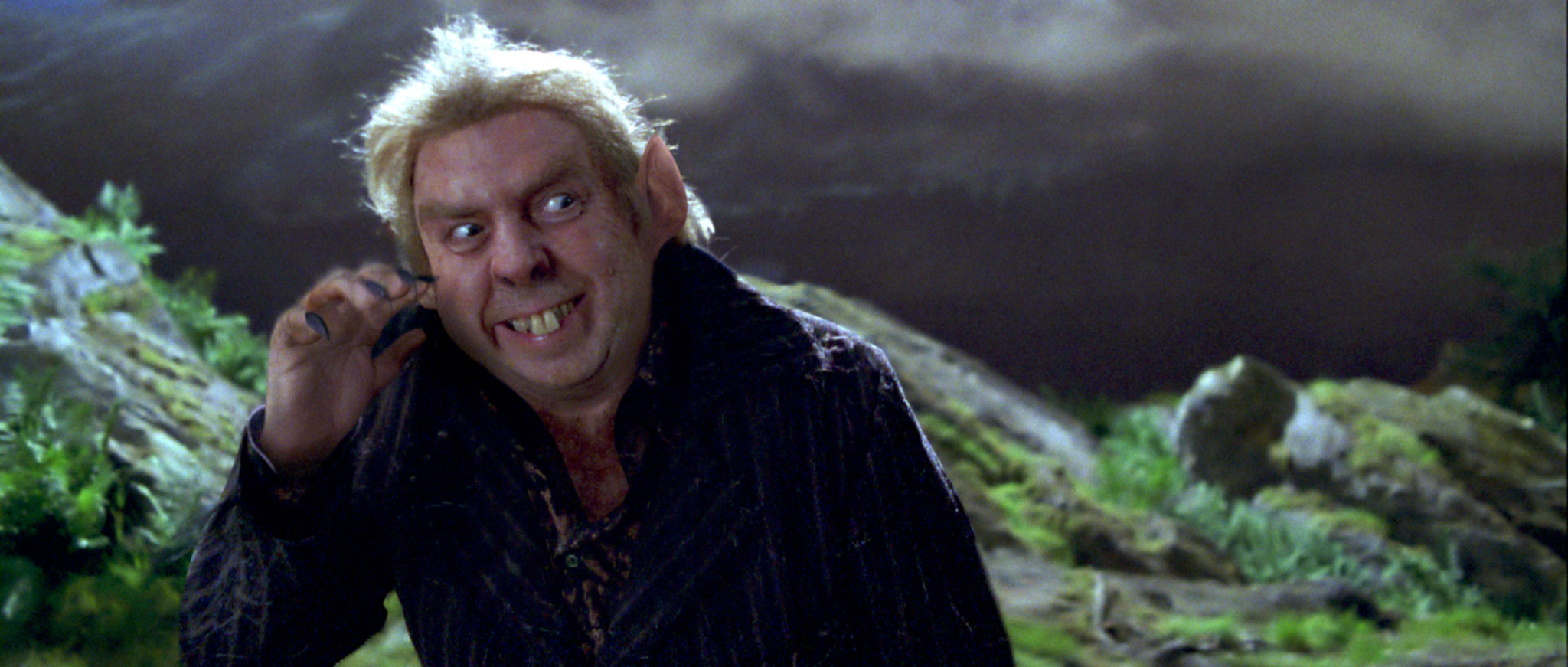I've been meaning to read this book for years. Three of my favorite authors (Nicholas Meyer of the even-numbered Star Trek movies, Mike Carey of The Unwritten, and science fiction juggernaut Ray Bradbury) have repeatedly expressed deep admiration for Herman Melville's 1851 novel, making extensive allusions to it in their own works. Heck, Bradbury loved it so much that he wrote the screenplay for the 1956 movie starring Gregory Peck as Captain Ahab! To endure as a "classic" for a hundred and fifty years and amass a fan-club that includes writers like those three, Melville must've done something right, right?
Boy, did he ever.
Moby-Dick is (if you'll pardon the obvious pun) a whale of a tale. And I mean that literally: it's a
huge book, almost a thousand pages long. And it's not only whale-like in size, but in depth as well, sounding the human soul and the human condition in ways that most other novels can only weakly imitate, covering themes as diverse as friendship, work, man's relationship with the natural world, madness, revenge, fate and destiny, human frailty, mortality, and about a hundred other themes besides.
I'll warn you before I go much farther, though: this book isn't for everyone. Obviously, if you have a problem with graphic depictions of animal harm, then this isn't the book for you; there are passages where the main characters are literally drenched in the blood of their prey, and Melville gets explicit when describing how they take the whales apart, winnowing these leviathans down into oil and meat and ivory. Likewise if you need female characters to catch your interest: there are only two minor female characters in the whole novel, and none appear after the
Pequod sets sail. This is realistic for the setting, since women, as a rule, did not travel on whaling ships, but it's worth mentioning that the entire cast is basically one big sausage-fest.
That said, I think that this book will give you a lot of food for thought, if you give it a chance. I was struck early-on by how funny the narrator, Ishmael, can be when he turns his keen wit on his fellow men; he wryly remarks, upon being forced to share a bed with a Polynesian cannibal (who later becomes his best friend): "Better a sober cannibal than a drunken Christian." As a former schoolmaster, Ishmael is well versed in classical literature, European and American history, geography, the natural sciences, and even scriptural analysis. His web of allusions and references is so dense that any worthwhile edition will include endnotes for clarity's sake.
Moby-Dick is also surprisingly exciting, which I
really didn't expect in a book that was written before the Civil War. There were several times where I needed to stop reading and consciously relax the muscles in my legs and arms, because I had tensed up with fear and anticipation. There were harrowing, horrifying scenes where I gasped aloud as men were killed, or maimed, or drowned, or dragged off into the deep blue sea. Melville does a great job of conveying how incredibly,
insanely dangerous the whaling profession was. In an age without radios or flare-guns or life vests, these men piled into rowboats, six at a time, to chase down, harass, stab, and enrage animals who could weigh more than
sixty tons! And if that's not enough, after fastening themselves to the whale with a giant meat-hook and being dragged behind it for miles, praying that their boat didn't swamp and the leviathan didn't decide to go for a deep dive. And all this they did with the whale-line, the rope which attached whale and harpoon to boat and crew,
twisted around their necks and oars! Ishmael observes that "when the line is darting out, to be seated then in the boat, is like being seated in the midst of the manifold whizzings of a steam-engine in full play, when every flying beam, and shaft, and wheel, is grazing you."
Speaking of whaling equipment, the edition I read has some really gorgeous Early American Modernist
illustrations by Rockwell Kent, which helped to clarify and explain a lot of the obscure terminology and nautical tools to which Melville alludes. For someone like me who has never been to sea, I found Kent's illustrations really helped convey the sheer sense of size, the breathtaking power of whales and the sea in which they live. If you get a chance, I recommend an illustrated edition if you can find one.
Strange to say, I can't honestly believe that Melville/Ishmael is entirely at peace with his profession, with the business of hunting and killing whales. Not after reading
Chapter 87: The Grand Armada. I don't know how you could write such a tender, touching encounter between whalemen and their prey and not be affected by it somehow. I think this passage helps to underscore the key differences between Ishmael and his captain, Ahab:
''And thus, though surrounded by circle upon circle of consternations and affrights, did these inscrutable creatures at the centre [of the herd] freely and fearlessly indulge in all peaceful concernments; yea, serenely revelled in dalliance and delight. But even so, amid the tornadoed Atlantic of my being, do I myself still for ever centrally disport in mute calm; and while ponderous planets of unwaning woe revolve round me, deep down and deep inland there I still bathe me in eternal mildness of joy.''
I take this to mean that Ishmael gives himself a little space, in the very heart of his being, where he doesn't let the world get to him, and can appreciate the beautiful things in life, in the sea, in his quotidian workaday life, and even in the whales he hunts. Ahab, on the other hand, can only see whales as embodiments of evil, living incarnations of "some unknown but still reasoning thing [that] puts forth the mouldings of its features from behind the unreasoning mask." Both men project their own inner natures onto their prey: one sees gentle creatures with complex lives and life cycles, the other sees only mindless brutes that exist only to torment and destroy mortal men.

...which leads me neatly to Captain Ahab himself. I saved him for the end because, asides from Moby Dick himself, Ahab is probably the most enigmatic character in the book. His name is practically synonymous with madness and doomed quests, but his arguments are weirdly compelling anyway. He's able to command the loyalty of his crew through a combination of personal magnetism, revenge fantasy, pseudo-religious symbolism, and appealing to the base human desire for violence and victory. Scholars have spilled oceans of ink on the subject of Ahab alone, so there's no chance that I'll really do him justice in these few-hundred words. Personally, I wonder if his mad quest for the White Whale really is the revenge-fantasy that most readers make it out to be. I wonder if, deep in his heart of hearts, Ahab knows this is a battle he can't hope to win. I wonder if his doomed quest for the beast that maimed him is really a form of suicide-by-whale.
Over the last century and a half, critics have claimed that the White Whale himself represents many things: God-with-a-capital-G, or Evil-with-a-capital-E, or the unstoppable and uncompromising power of Nature, or death/mortality, or the unfairness of life, or the ocean itself; the list goes on and on. Each critic seems to see something different in the White Whale's wrinkled brow and snow-white skin. Melville/Ishmael declines to define the White Whale too closely, preferring to let us use our own imaginations to discover what we see in him. Like an enormous movie-screen, we can project anything we want onto Moby-Dick's snowy flesh, but all of our assertions and projections only bounce off his chalky skin, leaving his insides, his true nature, untouched and unknowable.












